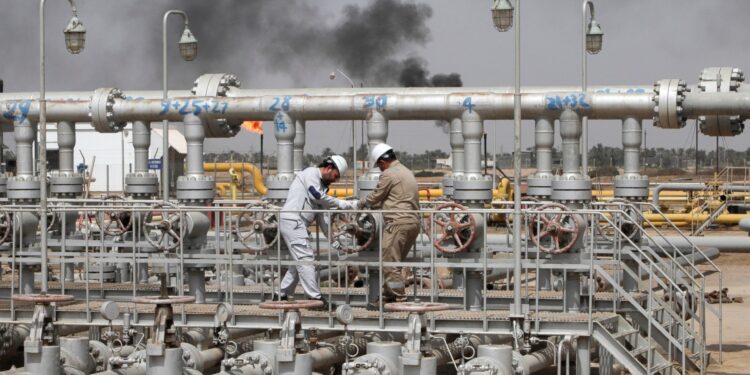The map of global oil production for 2023 shows a noticeable shift in the sector, with the United States emerging as the largest producer in the world, reaching its historic peak of production of more than 13 million barrels per day last September.
In a report published by the American “Oil Price” website, it reviewed the performance indicators of the oil sector for this year in the five most productive countries, which are, respectively: the United States, Saudi Arabia, Russia, Canada, then Iraq, and the most prominent challenges and expected trends in this sector.
Despite estimates of a slight reduction in spending for 2024, the United States is expected to maintain its growth, even with American oil producers planning to reduce spending for 2024 by 1%. Improvements in the efficiency of operations are expected to facilitate continued production growth by taking advantage of the technological advances it has made to reach This peak.
This rise in US production greatly affects global oil dynamics, which poses a major challenge to OPEC Plus countries such as Saudi Arabia and Russia in managing market prices.
While the United States dominated the arrangements, exceeding more than 13 million barrels per day, with expectations indicating continued growth, Saudi Arabia, the main member of OPEC, saw production of about 10.2 million barrels per day in the first half of 2023, and with Riyadh adopting a voluntary approach to reducing Production to stabilize markets and maintain prices, which led to an average production of about 9 million barrels per day in the second half of the year.
Russia ranked third on the list, which is considered a key ally of Saudi Arabia in the OPEC Plus alliance, and its production is estimated at about 9 million barrels per day of crude oil. Moscow decided to impose a veil of secrecy on its production and export data after launching a war on Ukraine, announcing that it would not publish detailed data about the oil sector, for fear that Western countries would use it to track and obstruct their income from this sector.
While Canadian oil production reached a record level of 4.86 million barrels per day in the previous year, with expectations of further growth with the expansion of production in new sites in the oil-rich province of Alberta, and therefore crude production in Canada is expected to rise by 8% by 2025.
Iraq came fifth on this list, as the second largest oil producer in OPEC maintained a production level of about 4.3 million barrels per day this year, according to the organization’s monthly reports.
The Oil Price report indicated that the increase in oil supplies to non-OPEC countries reached the level of 1.8 million barrels per day in 2023, driven by the United States, Brazil, Kazakhstan, Norway, Mexico, Guyana, and China.
In light of this increasing production from non-affiliated countries, the task of the OPEC+ group in controlling oil prices in global markets seems more difficult in the coming year.



